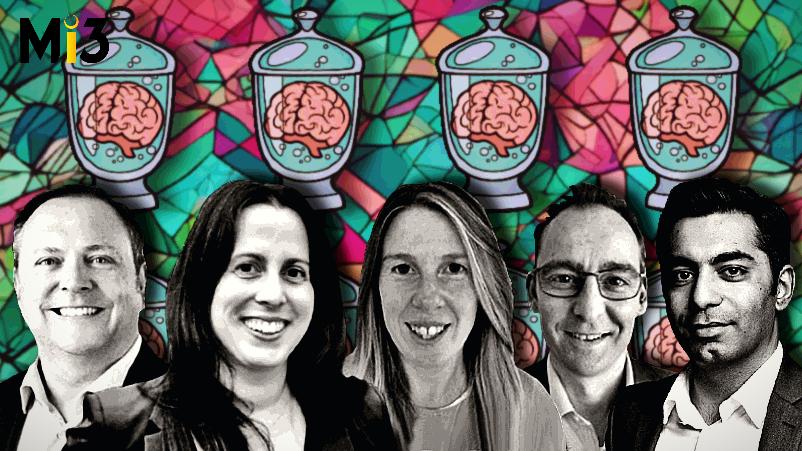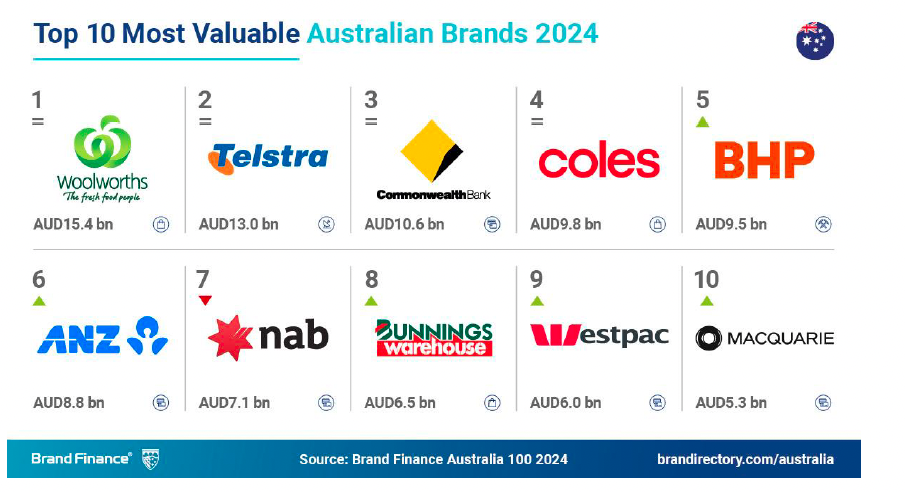‘Home loan opportunities have tripled’: NAB, ANZ, Commbank eye huge ROI from real-time decisioning – as retail and consumer brands move in

What you need to know:
- Banks are generating huge returns from real-time decisioning but it doesn’t come cheap and can cost millions a year.
- It’s not for everyone. At a minimum, Pega, the market leader in Australia, looks to work with companies with at least a million customers. Its main rival is SAS which is less active locally but does have Australian clients such as Virgin Money.
- While the category is famous for delivering Next Best Actions that tie back to customer lifetime value, it also includes customer journey orchestration, personalisation, and cross-channel marketing so expect to see familiar names like Adobe, Salesforce, Medallia, and Genesys in the mix.
- Commbank is seen as the most advanced RTIM proponent, but ANZ and NAB are now kicking goals. Westpac is alone among the Big Four in not implementing Pega (after writing off at least $70m trying to build its own solution called In the Moment), although it’s deep into an Adobe Journey Optimizer project.
- Real-time decisioning is central to the ANZ Plus strategy, while NAB has recognised the centrality of data and digital design to CX as it fits its rapidly expanding ‘Customer Brain’ that has grown from one Next Best action’ to 150 in barely a year.
The returns can also be worthwhile. We see that in banking, 25 per cent of the organisations told us that they had had a return on investment of $250 million or more.
It’s an investment that comes at a significant cost – often millions of dollars a year in software and service alone – but banks around the world are reporting returns of hundreds of millions of dollars from Real-Time Interaction Management (RTIM), AKA real-time decisioning.
Forrester Research describes RTIM as enterprise marketing technology that delivers contextually relevant experiences, value, and utility at the appropriate moment in the customer lifecycle via preferred customer touchpoints.
In simple terms, tech that puts relevant stuff in front of customers at the right time.
What makes it fly, according to Forrester is continuous real-time streaming data that is ingested so that a brand can make better decisions about how to serve a customer.
Rather than a single solution, it’s best to think of RTIM as a set of technologies incorporating specialisation like the next best decision engines where Pega Systems and SAS dominate and where HCL Technologies and NGData are seen as challenges. What they generally have in common, according to Forrester’s Rusty Warner speaking to a client webinar earlier this year, “…is a focus on data ingestion and analytics merged with business rules so that they can help you make next best action and next-best-experience decisions.”
Pega and SAS sit alone in the leadership quadrant overall for RMIT in Forrester’s most recent Wave research.)
But RTIM also includes customer journey orchestration where companies like Medallia, Engage Hub, and Genesis are present, cross-channel marketing hubs where Salesforce and Adobe feature, and also personalisation engines like Dynamic Hub and Monetate. The subsegment walls are not necessarily hard, with multiple vendors offering multiple solutions.
Smarter decisions
RTIM is traditionally overrepresented in industries like finance and telecommunication although 2023 saw a big spike in retail and consumer goods companies investing in the technology.
Pete Avery is one of Australia’s most experienced consultants in the real time decisioning field. He helped steer Suncorp through its implementation earlier in the decade, and has led decisioning programs at O2, Orange Group, Vodafone and Verizon.
“Real-time decisioning and next best action are especially relevant for banks because of how frequently their customers interact with them, the depth and richness of customer data, the breadth of banking products and the large number of engagement channels in play across inbound, outbound, digital and paid media,” Avery told Mi3.
The attraction, he says, is that decisioning leverages interaction context, intent, interaction history and customer data to calculate next best actions and customer journeys. “That helps orchestrate seamless, personalised and more relevant customer experiences across all channels (which typically have different siloed tech stacks).”
According to Avery, “Decisioning enables banks to execute their customer-centric vision and influence every customer interaction in every channel ultimately delivering exceptional CX, increased revenue, reduced churn, higher NPS, greater loyalty and improved customer lifetime value.”
Which in turn leads to healthier bottom lines.
It is typically deployed by organisations with very large customer sets – Pega for instance qualifies its targets in Australia as organisations with more than a million customers.
High rollers
It doesn’t come cheap. Costs for large customers run to millions per year, but the returns can be huge. These are also long-term bets and customers tend to pick and stick with their suppliers.
Warner also revealed that according to Forrester’s analysis, financial firms were getting an ROI of 17 per cent. “If you were a bank and you invested in a next-best-experience decision engine, you were likely to have been using that solution for seven years or more.”
“And the investments are big. We saw the different levels of investment by vertical earlier. On average, it’s about $1.7 million a year. It could be as low as $100,000 a year. Or again, if you are a bank, and you’re using a next-best-experience decision engine, that could be as high as $7 million a year, and the average is about $4 million.”
He described implementations as very complex, “But the returns can also be worthwhile. We see that in banking, 25 per cent of the organisations told us that they had a return on investment of $250 million or more.”
Banks moving
Those kinds of returns will be in the sights of Australian banks such as Commbank, ANZ, and NAB who have invested heavily in the technology. In terms of its marketing Westpac has had a couple of attempts and one spectacular failure – In the Moment. For now, it has retreated to focus on journey optimisation. It does use decisioning in other parts of its operations, and a spokesperson told us earlier this year, “Westpac has a number of insight and decisioning engines across the bank, including personal financial management, personal messaging, and artificial intelligence for micro-segmentation and optimisation of marketing programs.”
Suncorp has also invested in RTIM and at least one NZ bank – believed to be BNZ – is said to be currently implementing it. Pega dominates the local real-time decisioning market for banking however SAS has a local foothold with Virgin Money using its solution for real-time credit risk decision-making.
Their international peers are also investing heavily in the tech with the likes of Germany’s Commerzbank, S-Bank in Finland, Seacoast Bank in the US, and Bank of East Asia, all of whom are SAS customers. Pega meanwhile counts Wells Fargo, Rabo Bank, Citibank, and Royal Bank of Canada on its skite sheet.
Commbank is a global poster child for the Pega solution and is considered the market leader in terms of its implementation with almost a decade under its belt.
As Mi3 reported last year, its customer engagement engine makes 53 million calls a day and allows the bank to run thousands of experiments simultaneously. Commbank data & analytics chief Andrew McMullan has spoken effusively about the quality, compute power and intelligence provided by Pega and H2O.ai that underpin a bespoke system it has since leveraged to extend beyond traditional banking services.
For example, its Benefits Finder services have put an average of $710 into the pockets of customers utilising the app, facilitating payment of more than a billion in grants into communities.
Less well understood is the progress by rivals ANZ and NAB, however, both banks presented updates on their real-time decisioning implementations at the Pegaworld conference in the US last week.
According to ANZ Bank’s marketing technology lead, Karan Mehta, the goal was to build a decisioning hub that covered all the customer touch points and that not only aided with acquisition but also with adoption.
“When we launched the product we wanted to engage customers in the first 60 days of their journey to drive adoption … We focused on three key elements; data, the decision framework, and channel integration.”
“As part of the first 60 days of the customer journey, we have a series of tiny, personalised, and targeted actions, and using this foundation capability, we saw up to 25 per cent conversion of some of the financial well-being next best actions.”
The bank has also been able to drive higher adoption of key features – by as much as 40 percent according to Mehta – while reducing the next best action life cycle by 60 percent.”
Looking ahead Mehta said there was a focus on helping customers from the bank’s traditional business migrate to ANZ Plus, its branchless banking app.
We wanted to center the strategy around our overarching bank strategy It's not something that's off on the sides of new tech innovation that we're just going to play with. It's something that was critical to what we were doing and who we wanted to be at NAB
More brains
NAB meanwhile talked about the development of what it calls the ‘customer brain’.
The bank made the decision to implement Pega in 2022 and launched its first “action” in April 2023. Since then, it has scaled the system to 121 actions by April 2024. It is now closer to 150, said NAB’s customer analytics and decisioning executive, Jess Cuthbertson. She told attendees that to power its ‘customer brain’ next best action system, NAB runs about 1,000 customer data attributes through 800 adaptive machine learning models.
Later she, along with head of customer decisioning, Lisa Marchant, outlined several of the use cases deployed so far:
- For customers who start the journey online but don’t finish digitally “the brain” prompts customers through the account opening journey in their preferred channel.
- To ensure stronger compliance with regulatory requirements, customers are prompted to update their details while they are engaged in online banking, which reduces the bank’s reliance on other more costly channels.
- In home lending, through smarter data analytics, customers are matched to NAB bankers and this has driven a 50 per cent increase in conversations that in turn generated 3X more opportunities for the bank. Plus, most of the opportunities are actioned on the day the conversation was initiated.
- The decisioning hub is also helping to thwart scammers, where customers with higher payment limits are more at risk. “The brain encourages customers to decrease their limits reducing their exposure to fraud,” said Marchant.
Cuthbertson attributed the early success of the project to the sponsorship it has received top-down from the board, and also from the business managers.
“We wanted to centre the strategy around our overarching bank strategy. It’s not something that’s off on the sides of new tech innovation that we’re just going to play with. It’s something that was critical to what we were doing and who we wanted to be at NAB.”
Likewise, she said, “We sat with the business and we said, what are the business problems that we have? Where do your customers struggle, and how can we better support them? And we had two or three of these very critical people in the organisation that we got on side early.”
Per Cuthbertson, “The point on sponsorship is you’ve got to build it early on, but then you have to maintain it and keep them updated as you go, because there are so many possibilities with something like the customer brain. People get it in theory, but it’s hard to really imagine it until you’ve got some real, tangible examples.”
Marchant underlined that the reason NAB was able to hit the ground running was because of all of the work it had already done to modernise systems, which meant less unplugging and stack rewiring.
“For quite a while at NAB we have had a reasonably sophisticated marketing automation capability that delivered a whole host of outbound experiences. And these were all connected up to the same technology platform.”
That gave the bank strong outbound marketing capabilities, and by plugging Pega into the existing architecture the project team also started on day one with a critical mass of channels.
“That really helped us service a lot of the use cases that we’re being asked to deliver from our stakeholders. So they were coming in and they had a business problem which was that they always wanted to go multi-channel. So this was a really good way for us to go multi-channel really, really quickly.”
It also meant they could focus early on building out inbound capabilities. “We also noted that inbound is absolutely critical to decisioning in practice, and we needed to uplift inbound channels, where we felt that was really important. And the first place that we focused on doing that was in the mobile and the Internet-making space.”
Future-proofing
Mi3 asked Cuthbertson whether the teams had factored in potential adjustments driven by potential regulatory shifts around automated decisioning. “We always respect and adhere to customers’ consent and privacy, that is a non-negotiable for us.”
She said the project team regularly meets with the privacy and ethics team. “We engage with them quite regularly, because, as you can see, we’ve got quite a lot in there. We go to them with every use case and for any kind of new use case, we’ll engage with them. They’ll really challenge us to ask, ‘Are you thinking customer-led’? ‘Are you thinking future-led on where the policy is going and are you making sure that we’re doing the right things for our customers.”





